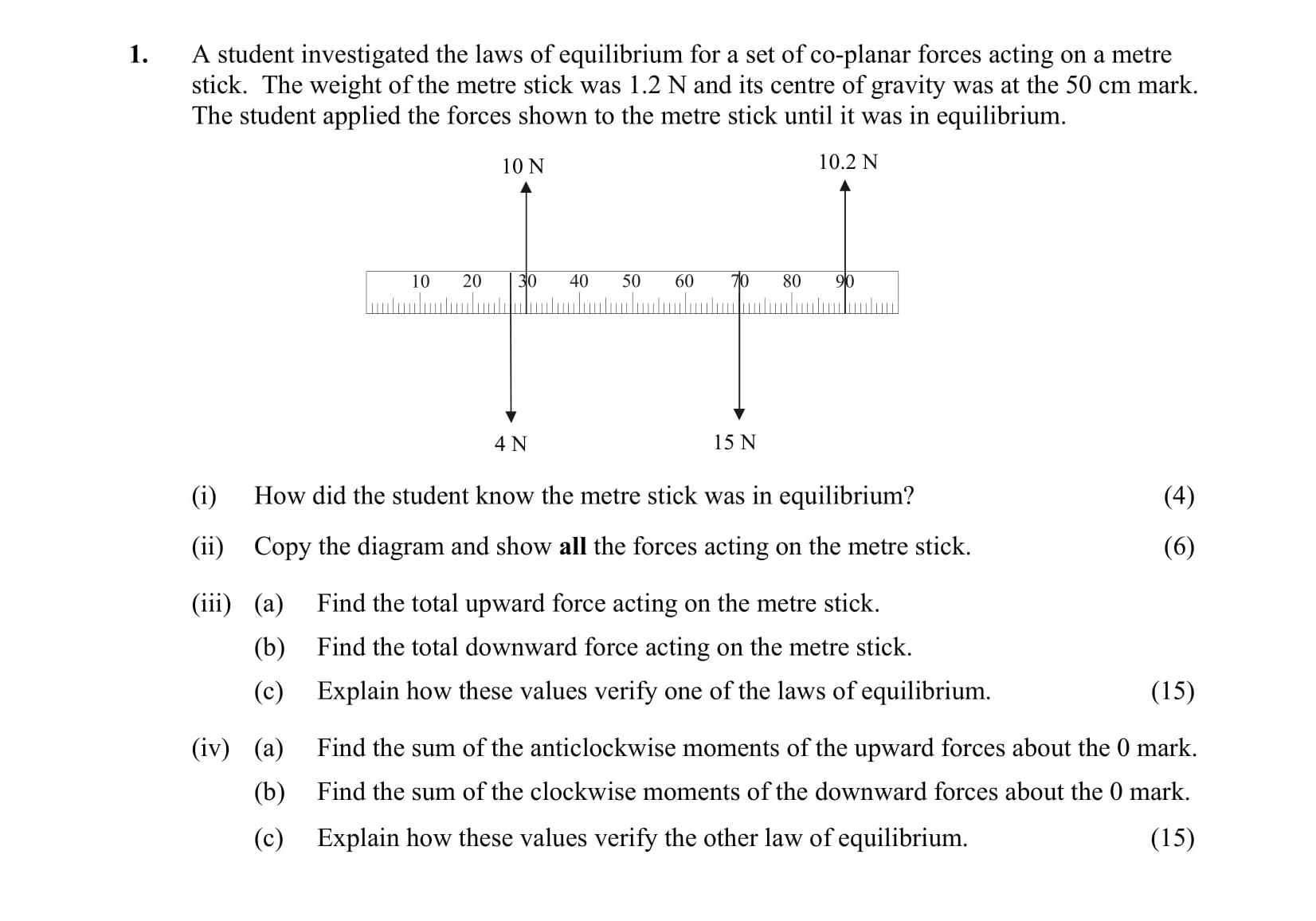Photo AI
A student investigated the laws of equilibrium for a set of co-planar forces acting on a metre stick - Leaving Cert Physics - Question 1 - 2007
Question 1

A student investigated the laws of equilibrium for a set of co-planar forces acting on a metre stick. The weight of the metre stick was 1.2 N and its centre of gravi... show full transcript
Worked Solution & Example Answer:A student investigated the laws of equilibrium for a set of co-planar forces acting on a metre stick - Leaving Cert Physics - Question 1 - 2007
Step 1
How did the student know the metre stick was in equilibrium?
Answer
The student knew the metre stick was in equilibrium because there was no resultant force acting on it. In equilibrium, the sum of all vertical forces must equal zero, implying that upward forces balance downward forces. Additionally, the stick remained horizontal without rotation, indicating a state of rotational equilibrium.
Step 2
Copy the diagram and show all the forces acting on the metre stick.
Answer
The diagram should accurately represent the metre stick with the following forces:
- Weight of the stick (1.2 N) acting downward from the 50 cm mark.
- Upward forces: 10 N acting at the 10 cm mark, 4 N acting at the 80 cm mark, and 15 N acting at the 90 cm mark.
Step 3
Step 4
Step 5
Explain how these values verify one of the laws of equilibrium.
Answer
According to the first law of equilibrium, an object is in equilibrium when the sum of upward forces equals the sum of downward forces. Here, the total upward force (29 N) does not equal the total downward force (1.2 N). This indicates that while the forces may momentarily balance, the object will not stay in equilibrium unless adjustments are made.
Step 6
Find the sum of the anticlockwise moments of the upward forces about the 0 mark.
Answer
To calculate the anticlockwise moments, apply the formula: Moment = Force × Distance
- For 10 N at 10 cm: Moment = 10 N × 10 cm = 100 Ncm
- For 4 N at 80 cm: Moment = 4 N × 80 cm = 320 Ncm
- For 15 N at 90 cm: Moment = 15 N × 90 cm = 1350 Ncm Total Anticlockwise Moment = 100 Ncm + 320 Ncm + 1350 Ncm = 1770 Ncm.
Step 7
Step 8
Explain how these values verify the other law of equilibrium.
Answer
According to the second law of equilibrium, the sum of clockwise moments must equal the sum of anticlockwise moments. In this case, the total anticlockwise moment is 1770 Ncm, while the total clockwise moment is 60 Ncm, which indicates the metre stick is not in a state of rotational equilibrium. This imbalance will cause the stick to rotate until a new balance is achieved.
